




































































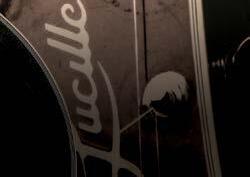























































































































































When we think of kings and music in Mississippi, we often conjure images of Tupelo’s favorite son.
Elvis Presley was indeed the “King of Rock and Roll.”
But the world would not have had an Elvis Presley — or rock and roll for that matter — without the blues. Ground zero for this distinctly American artform was Mississippi. It’s impossible to have a conversation about Mississippi blues without talking about B.B. King.
Had he lived long enough, King would have turned 100 this year.
A decade ago this month, King, 89, died following years of health struggles with diabetes.
Although he was born in Berclair and spent his earliest years near Itta Bena, King considered Indianola his hometown. It was in Indianola where his body laid in state for mourners to pay their last respects back in 2015. Indianola is also home to the B.B. King Museum and Delta Interpretive Center, where blues and King fans from all


over the world visit to learn about where King came from, what he went through, and how he impacted the world with his mesmerizing singing and guitar playing.
For this month’s issue, we visited the museum; a beautiful tribute to a legendary life dedicated to one of this country’s truest and purest creative mediums.
But why should we let blues tourists and King fans from the UK, France, and Belgium have all the fun?
As Mississippians, we should visit to learn about King, Mississippi, the blues, and — in some ways — ourselves.
We hope you enjoy the issue.

by Michael Callahan
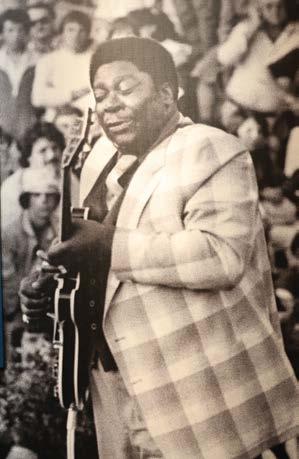
Earth’s Bounty + First Saturday The MAX • May 3
Bud N’ Boilin’ Singing Brakeman Park May 3

Meridian Symphony Beethoven & Blue Jeans MSU Riley Center • May 3
Jimmie Rodgers Music Festival Downtown Meridian • May 12–18
Dailey & Vincent MSU Riley Center May 22 Thank You Please Come Again: How Gas Stations Feed & Fuel the American South Exhibit at The MAX On display through June 21

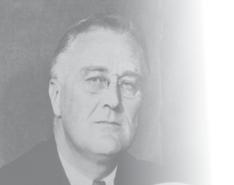
This month marks the 90th anniversary of electric cooperatives in America.
On May 11, 1935, President Franklin D. Roosevelt issued an executive order to create the Rural Electrification Administration (REA). The order was part of the Emergency Relief Appropriation act passed by Congress to alleviate su ering and hunger during the depression, according to the book, “Rural Electrification in Mississippi 1934-1970” by Winnie Ellis Phillips.


The executive order led to a law by Congress — The Rural Electrification Act of 1936 — which empowered rural communities to bring electricity to their communities via loans from the REA.
The issue of a lack of electric power in rural areas was especially significant in Mississippi, where “only ninetenths of 1% of Mississippi’s farms were electrified.”
Mississippi led the nation in securing electric power for rural residents.
Alcorn County Electric Power Association in Corinth was America’s first rural electric cooperative. Monroe County Electric Power association in Amory was the nation’s first REA cooperative to energize its system in 1936.
Today, Mississippi has 25 distribution electric cooperatives and one generation and transmission electric cooperative.
The state’s electric co-ops provide electric service to more than 1.8 million Mississippians.
Mississippi State University o cially broke ground in March on the Northern Gulf Aquatic Food Research Center, a first-of-its kind facility in Mississippi dedicated to aquatic food safety, quality assessment, processing and product development.
The area is serviced by Singing River Electric.
The ceremony, hosted by the Jackson County Economic Development Foundation, or JCEDF, recognized more than five years of collaborative work with MSU on the multimillion-dollar facility. Construction of the Mississippi Agricultural and Forestry Experiment Station, or MAFES, research center is a combined investment of $3 million from the federal RESTORE Act and $865,000 from the Gulf of Mexico Energy Security Act, or GOMESA, as well as $4 million from the state to cover fixed equipment including walk-in coolers and freezers and fume hoods for the laboratory.

The first of three planned structures, the building will house a biosafety laboratory for testing pathogens and toxins and an analytical chemistry lab for measuring chemical residues in water and aquatic food products such as seafood and catfish. The lab will facilitate research on new processing methods to extend shelf life — reducing waste — and o er new value-added food products and processing techniques using locally produced aquatic foods that often leave the state for value-added processing elsewhere.
The research center will be located at the Sunplex Light Industrial Complex on Highway 57, near the Interstate 10 corridor. The facility and its strategic location are the result of dedicated teamwork between MSU and Jackson County entities, including the Jackson County board of supervisors, port authority and JCEDF, which recruited MSU to locate its coastal facility in Jackson County.
With the seafood industry contributing over $300 million annually to the state economy, the new research center will help Mississippi meet a critical need for one of its largest industries. It also will help the state’s catfish producers, who manage 29,900 freshwater pond acres, with a total production value of $214 million in 2024.
Mary Martha Henson, JCEDF deputy director, noted the facility will draw scientists from other research-intensive universities in the region to collaborate with MSU.
The center also will o er opportunities to work in close proximity to the distinctive assets and amenities the Mississippi Coast provides.





While in college, we amused ourselves without spending much money that we didn’t have by throwing Frisbees at trees, road signs, mailboxes, and other objects.
We even had friendly little competitions to see who could hit the object in the fewest throws. That was more than 40 years ago. Since then, disc golf exploded exponentially across the world.
“I started playing disc golf about six years ago,” recalls Damon Parker of Petal, former president of the 1,900-member Hattiesburg Disc Golf Association. “I just planned to play casually with some friends, and it developed into competing in tournaments.”

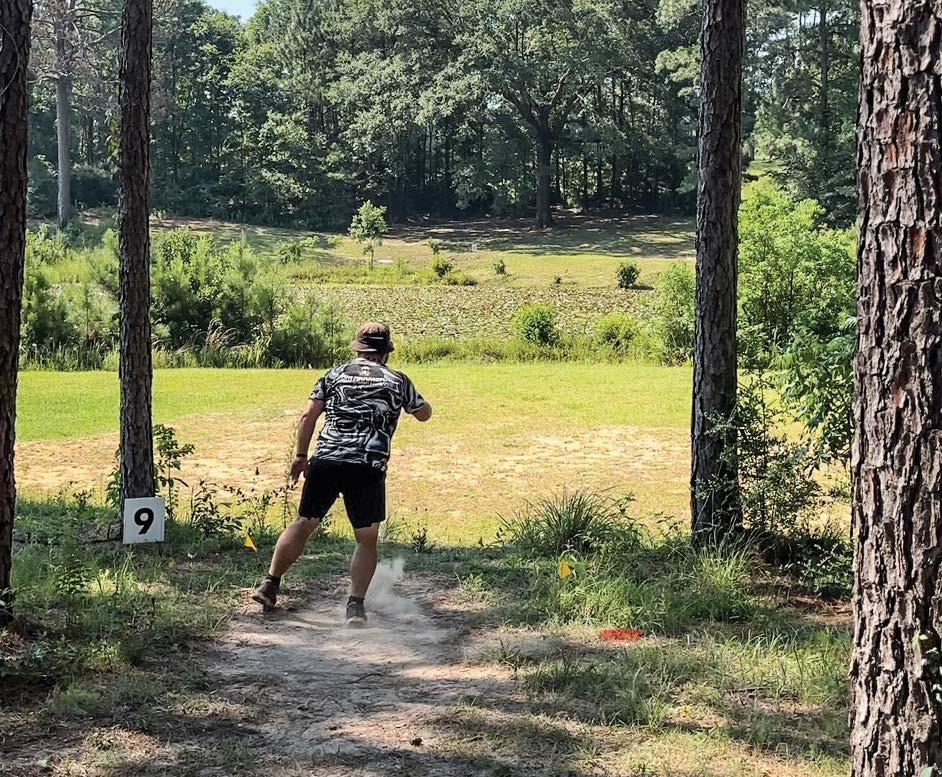
“To start the game, players come to a T-pad and throw discs at a basket,” Parker said. “The disc must go into the basket. Anything else counts as a stroke. Like in golf with a ball, the object is to go from the T-pad into the basket with the fewest strokes.”
To start the game, players come to a T-pad and throw discs at a basket. The disc must go into the basket. Anything else counts as a stroke. Like in golf with a ball, the object is to go from the T-pad into the basket with the fewest strokes.
Disc golf generally follows the rules of golf with a ball. The major di erence, disc golfers try to put their discs into baskets 24 inches in diameter instead of hitting a ball into a hole.
Players throw di erent types of discs. Use fairway drivers from the T-pad to get the most distance to the basket. Use mid-range discs for throws of about 200 feet or less and putters for shorter throws on the greens.
“People used to go to parks and move garbage cans around to serve as baskets if they didn’t have a real course,” Parker said. “Now, we have courses all over the state. Most Mississippi state parks have courses. Disc golf is a sport that people of all ages can play alone or with a group. In our club in Hattiesburg, we have players from 12 years old to folks in their 70s.”
“As years of weekly changing menus passed, we felt limited by the available produce. My partner Adrienne and I were on vacation in Fiji when we visited an organic farm that was a garden of Eden with almost unlimited unusual edible and medicinal plants. On the flight back, we decided to look for a property where we could create our own little food paradise. That was about 2017 when we were on the trip, and we bought the Mississippi farm in 2018,” Foundas said.
Because Foundas’s restaurant focuses on zero waste cooking and complex flavors, fermentation is a key aspect of the process.
“For example, at the end of a weekly menu, we may have extra brussels sprouts and roast corn. So, we might make brussels sprout kimchee and roast corn miso,” Foundas said.
The Tiki Food Lab and Education Center is not just about fueling the menus of the restaurant. There are food experiences open to the public at the Pearlington facility, including a farm tour, cooking classes, and chef-curated meals based on di erent topics.


“We have done classes on miso making, introduction to fermentation, wine and vinegar making, and barbecue techniques from around the world. We have also had events featuring well known neurologists discussing the synergy between the micro biome and brain function — and then prepared a meal that provides food for thought! Another event is the poetry menu, where the guests prepare an eight-line poem that turns into their eight-course menu,” he said.
The reaction from the public has been positive.
“People seem to be really interested in foods that make you healthy and boost your immune system, which is what fermented and organic foods do. Plus, an evening at the Tiki Farm is like being on vacation in the South Pacific, but just a short drive from New Orleans, Biloxi, or Picayune,” Foundas said.
Although Foundas spends most weekdays at the restaurant, his weekends are spent in Pearlington at the farm.
“I’m originally from New Orleans and have been visiting the Gulf Coast since I was a child, so I have an a nity for the area. We love the proximity to the coast, the beauty of the bayou, and the interest in business development from Hancock County.”
For more information about the farm, visit tikifoodlab.com or call 504-338-2986.

















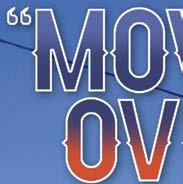




by Scott Flood
When lineworkers are perched in a bucket truck, repairing power lines along a busy road, they have good reason to be concerned about their safety. However, most are less apprehensive about problems like working with high voltages or falling. Their biggest worry is also the most unpredictable: a distracted driver slamming into their vehicle or a nearby power pole.
The National Safety Council reported that 891 people were killed and 37,701 people were injured in work zone crashes during 2022 (the most recent statistics). Most of those crashes occur in construction sites, which are usually well-marked. Electric co-op crews are likely to face even greater danger, as they are often working alone along remote stretches of roads, frequently in heavy rain or other adverse weather conditions that can reduce their visibility.
The danger of work zone crashes led every state to adopt “move over” laws that require drivers to lower their speed and switch lanes when possible to protect emergency vehicles. The goal is to provide an added safety bu er and minimize the potential for accidents. Drivers caught violating the laws can face penalties, such as significant fines.
Compounding this issue is the dramatic increase in distracted driving. The National Transportation Highway Safety Administration has reported that as many as 1,000 Americans are injured each day because of activities that take drivers’ attention away from the road. The most common is reading and responding to text messages. If a driver traveling at 55 miles per hour glances at their phone for just five seconds, they’ll have traveled the length of a football field before returning their gaze to the road.
The design of today’s vehicles contributes to distraction. Many vehicles have complex controls for entertainment and climate that demand the driver take their eyes o the road to make even simple adjustments.
Geography can also be a factor. Co-ops serving rural and remote areas often have power lines along twisty and hilly roads. Locals accustomed to driving those roads at fairly high speeds may be startled and have little time to react when they encounter a work crew past a hill or around a curve.
Besides the potential for lineworker injuries, accidents can also damage or destroy expensive service vehicles, reducing a co-op’s ability to respond to outages and other problems. Power poles and other infrastructure may also su er severe damage.
Additionally, many of the tasks performed by lineworkers, such as reconnecting high-voltage power lines, are inherently dangerous and require their complete focus. When their attention is distracted by speeding or noisy vehicles, they’re more likely to make mistakes that can complicate the repair or cause injury.
Nor are co-op employees at risk only when their vehicles are parked and repairs are underway. Lineworkers frequently have to drive slowly along the shoulder of roads to pinpoint broken power lines or failed
transformers, especially in darkness or conditions that interfere with visibility.
Many state transportation agencies have work zone awareness programs. Amplifying those e orts by devoting part of a co-op’s advertising, publicity, and social media reminds co-op members and other drivers of the importance of giving lineworkers a wide berth.
Co-ops are considering ways they can modify bucket trucks and other service vehicles to make them more visible. Bright colors and additional lighting such as flashing strobe lights and lighted detour arrows can attract attention from a distance. Reflective “work zone ahead” signs can also alert drivers to be ready for an unusual situation. Sometimes, a little bit of extra attention is all that’s needed to prevent a serious incident.
For more than four decades, business writer Scott Flood has worked with electric cooperatives to build knowledge of energy-related issues among directors, sta and members.



Mississippi’s “Move Over” law was passed to safeguard law enforcement, fire, highway construction workers, and utility crews and vehicles.
According to the law, motorists passing a utility vehicle must slow down and yield the right-of-way by changing lanes, keeping at least one empty lane where possible. If a lane change is impossible, a driver must slow down and be prepared to stop.
Violators may be fined up to $250 for failing to comply and up to $1,000 if there is damage to the o cial vehicle or injury to any driver or passenger of an o cial vehicle.




Besides the potential for lineworker injuries, roadside accidents can also damage or destroy expensive service vehicles, reducing a co-op’s ability to respond








































MONDAY, MAY 26





Pearl River Valley Electric honors those who courageously gave their lives.

All Pearl River Valley Electric o ces will be closed in observance of Memorial Day.
Dispatchers will be available. Report outages by calling 855-2PRVEPA.
Pearl River Valley Electric is on social media.
Keep up to date with PRVEPA news and receive information on outages.
Simply search for @MyPRVEPA on Facebook and X to follow us.
































































































































• Applications are available at PRVEPA o ces and at prvepa.com.
• Completed applications must be postmarked or emailed by Aug. 8.




• Scholarship recipients must be a PRVEPA member, spouse, or child of a member participating in the Round Up program.




• Recipients must be full time (12 hours or more per semester) freshmen students enrolled in academic or career-technical programs.






• Scholarship funds will be credited to each student’s college account — no checks will be issued to individuals.

• Scholarships should be awarded by the end of September. Students must be enrolled in good standing at the time funds are released to the colleges.







Funded by members who are rounding up their monthly bills, these scholarships are intended to assist students who will attend a Mississippi community college as a freshman this fall.
Purvis, MS - If you experience numbness or tingling in your hands, arms, legs, or feet or if you experience shooting or burning pain, this is important.
Please read this carefully
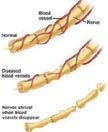
Peripheral Neuropathy is when small blood vessels in the hands, arms, feet or legs become diseased and tiny nerves that keep the cells and muscles working properly shrivel up and die.
Early-warning symptoms include tingling and numbness, mild loss of feeling in your hands, arms, legs or feet, inability to feel your feet, which increases your risk of foot-injury and falling
More Advanced Symptoms Include...
Loss of coordination & dexterity, which puts you at increased risk of accidents
Inability to feel clothing like socks and gloves
High risk of falling, which makes walking dangerous, and makes you more dependent on others
Burning sensations in your arms, legs, hands or feet that may start mild, but as nerves and muscles die, may feel like you're being burned by a blow torch.
Ignore the early warning signals long enough and you risk progressive nerve damage leading to muscle wasting, severe pain, loss of balance and a lot of staying at home wishing you didn't hurt
When every step is like walking on hot coals, sitting still may be the only thing you feel like doing But there's little joy in sitting still all day long
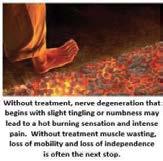
Now here's the scary part....
Nerve damage CAUSES cell damage Cell damage SPEEDS UP nerve degeneration
Without treatment this can become a DOWN-WARD SPIRAL that accelerates.
The damage can get worse fast Mild symptoms intensify Slight tingling, numbness or lack of feeling can turn into burning pain.
Before you know it, damage can become so bad you hurt all the time
Unless this downward spiral is stopped and nerves return to proper function - the damage to nerves and cells in the affected area can get so bad your muscles begin to die right along with the nerves and cells. And that sets the stage for weakness, loss of mobility, disability, and dependence on others.
If you have early warning signs of peripheral neuropathy, (tingling &/or numbness, loss of feeling or pain) it's CRITICAL you get proper treatment
It's critical, because with proper treatment the symptoms can often be reversed Without it, you are playing Russian Roulette with your health
Once your nerve loss reaches 85%, odds are there's nothing any doctor can do to help.
The most common method your doctor may recommend to treat neuropathy is prescription drugs

Drugs like Gabapentin, Lyrica, Cymbalta, & Neurontin are often prescribed to manage the pain But, damaged nerves and dying cells do not heal on their own
Pain pills do not restore healthy nerve function. They just mask the pain as the nerves continue to degenerate and cells and muscle continue to die.
Taking endless drugs and suffering terrible side effects that may damage your liver & kidney and create even more problems, is not a reasonable path. You deserve better. Three things must be determined to effectively treat neuropathy 1) What is the underlying cause? 2) How much nerve damage has been sustained? 3) How much treatment your condition will require?
With proper treatment, shriveled blood vessels grow back & nerves can return to proper function How much treatment you may need depends on your condition
At Purvis Chiropractic we do a complete neuropathy sensitivity exam to determine the extent of your nerve damage The exam includes a detailed sensory evaluation, extensive peripheral vascular testing, & a detailed analysis of the findings.
Dr Rob Acord, D C will be offering this complete neuropathy sensitivity exam for $47 This special offer goes away at the end of this month as we have a limited number of exam appointments available
Stop Hurting & Start Healing
Call







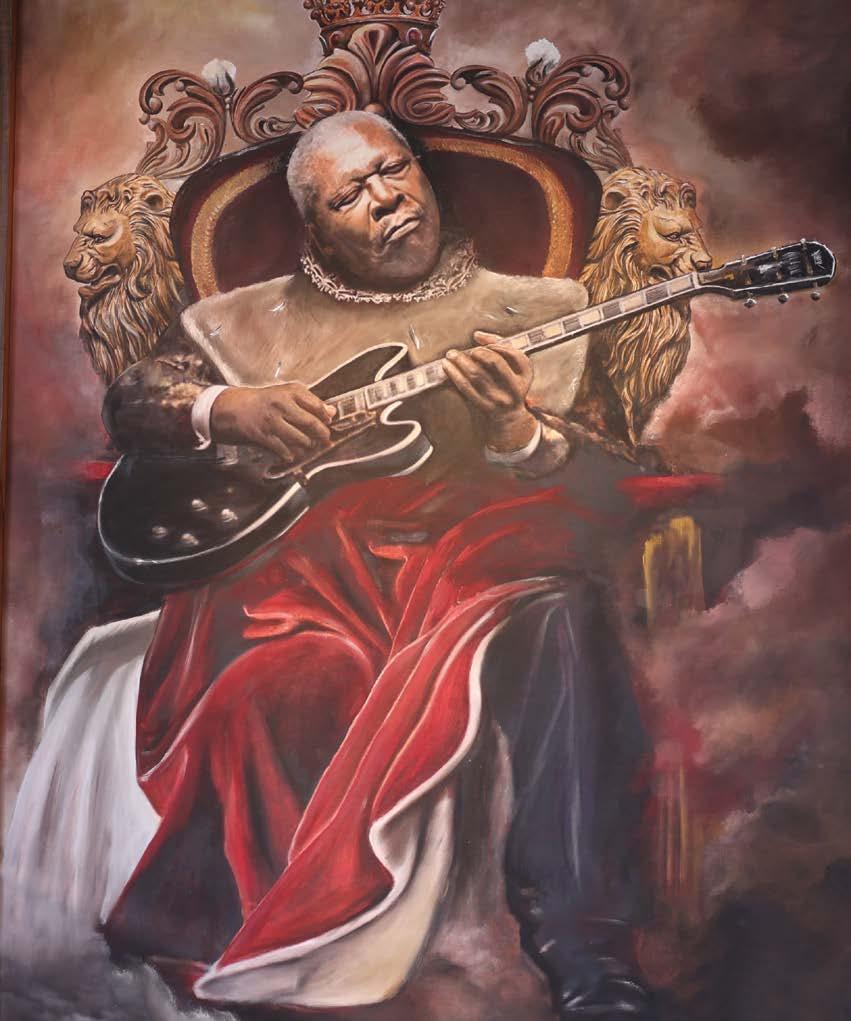
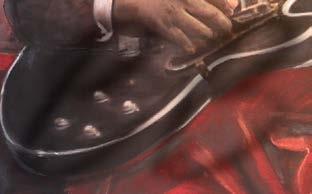

















by Jim Beaugez
“The thrill is gone — it’s gone away for good,” sang B.B. King on his biggest hit, the 1970 crossover smash “The Thrill is Gone.”
But while he was singing from the perspective of a jilted suitor on the tune that earned his first of 15 Grammy awards, when it came to making music and performing, the blues legend, whose career spanned seven decades, never lost the spark.
“Once he picked up that guitar, he transformed into a whole di erent person,” says daughter Karen Williams. “We knew him as dad and granddad and uncle, brother and father, but he would completely transform once he picked up Lucille.”
King, who would’ve turned 100 in September, left Williams, his 14 other children, and his legions of fans a legacy of determination and perseverance through his music. He also left them the B.B. King Museum and Delta Interpretive Center in Indianola, where he was laid to rest a decade ago this month.
Born Riley B. King in the Berclair community on Sept. 16, 1925, the future globe-trotting bluesman spent his earliest years in a sharecropper’s shack near Itta
Bena and grew up in towns like Kilmichael, where he sang in the gospel choir at Elkhorn Baptist Church, and then Indianola, which he considered his hometown.

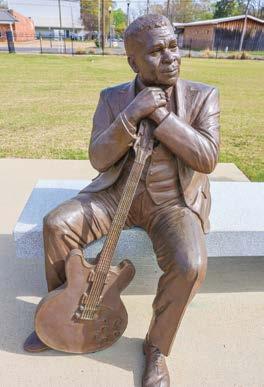
If Memphis is where King became “Blues Boy,” later shortened to B.B., this central Delta city of 10,000 residents is where he became enamored with blues music. King busked on Church Street — at the time a vibrant corridor where juke joints were just as common as houses of worship, in contrast to its current incarnation as a sleepy neighborhood thoroughfare — and found he earned more tips for the blues songs he played than gospel songs. The math was simple.
Arriving in Memphis in the late 1940s, King worked as a radio disc jockey with the handle “Beale Street Blues Boy” in acknowledgment of his other gig working the downtown jukes alongside other bluesmen of the day, like Bobby “Blue” Bland. He soon began recording music and putting together his live show, but his first Billboard chart-topper, “Three O’Clock Blues,” in 1952 put him on the national stage.




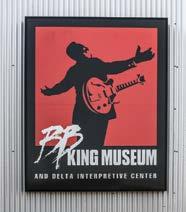















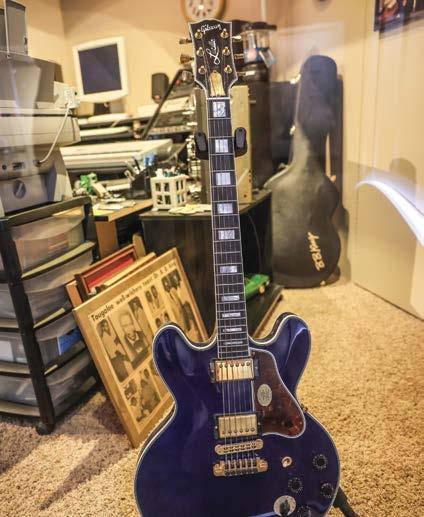
But as segregation laws fell and American society integrated, the venues King and his band could play expanded. To wit, the final exhibit at the museum features one of his tour buses that carried them more than a million miles.
Sometimes, he even brought his family along for the ride. While on a weeklong European tour in 1998 that routed them to countries like France, Belgium, and Luxembourg, Williams got a thrill of her own from seeing her father perform on stage for adoring fans.
“I would just be overwhelmed at the crowds of people, the young people who would be completely excited about him,” Williams says. “They were shouting, ‘B.B., we love you!’ and that seemed to just inspire him to even play harder. It just amazed me.”
King’s passing on May 14, 2015, from complications caused by diabetes and high blood pressure, months shy of his 90th birthday, impacted people far beyond the music community. Thousands attended his funeral procession as he traveled Beale Street one last time and lined Highway 61 for the final leg of his journey home to Indianola, where he laid in state in the cotton gin where he once worked, now a wing of his namesake museum. More than 4,000
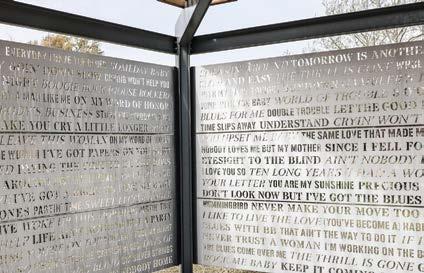
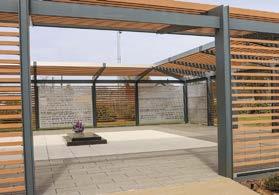

mourners, including famous friends like blues guitarist Buddy Guy, attended his visitation.
“People drove from all over to come pay their respects to him that day,” says Malika Polk-Lee, the museum’s executive director. “It was a continuous line, and we had to have help from the state troopers for security on top of the local police force. And it was a hot Delta summer day, but people didn’t care. They stood in line until they got a chance to view him and pay their final respects.”
People love the music, which is what draws them to him, but if you have a man who will stay ‘til 3 o’clock in the morning to sign your poster, your jacket, your album cover, your ticket, and have a conversation and make you feel that connection with him — that is why he has fans that have stood the test of time. It was the man himself and the sincere connection he made with his fans.
For all the thrills King brought fans through his music and performances, Polk-Lee believes the measure of the man himself keeps people coming back to Indianola to rediscover his legacy. Almost as much as the music he created.
“Everyone talks about his character, and I think that is how he created lifelong fans,” she says.
“People love the music, which is what draws them to him, but if you have a man who will stay ‘til 3 o’clock in the morning to sign your poster, your jacket, your album cover, your ticket, and have a conversation and make you feel that connection with him — that is why he has fans that have stood the test of time. It was the man himself and the sincere connection he made with his fans.”























At age 28, her reputation led to her being hired by the then-named Memphis State University as their head coach. Coming from a winning program like USM to take over a program with only six wins was going to be a challenge. When she left the program 13 years later, the University of Memphis had 229 wins and had gone to four NCAA Tournaments and four Women’s National Invitational Tournaments.
“When I was in Memphis, a high for me was in 1995 when we beat the Cheryl Miller coached USC Lady Trojans in the second round of the NCAA Tournament to move on to the Sweet 16,” Lee-McNelis said.
In 2004, USM reached out to Lee-McNelis to coach the Lady Golden Eagles. Before her career was over at Southern Miss, she had won 339 games. A couple of highlights were the 2013-14 team that won 27 games followed the next year with a 25-win season. The 2022-23 squad also captured the Sun Belt Conference regular season title. She led USM to several postseason appearances. Her career 564 wins is significant in that only 61 coaches have achieved that many wins in college basketball history.
She was given the Pat Summitt Most Courageous Award in 2024 after leading the team to a Super 16 finish in the WNIT. Lee-McNelis was also inducted into the Southern Miss Sports Hall of Fame in 1997 and in February of this year was named to the Legends Club at USM for her prestigious career.
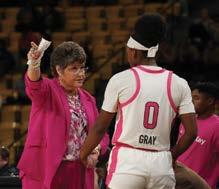
Coaching
at Southern Miss has been more than a profession. It has been a dream realized.
Having
the opportunity to lead the program has been one of my greatest honors.

“Coaching at Southern Miss has been more than a profession. It has been a dream realized. Having the opportunity to lead the program has been one of my greatest honors,” said Lee-McNelis.
Lee-McNelis has battled lung cancer for almost a decade, and she knows that is her toughest contest. She has battled the disease four times since it was first diagnosed in March 2016. She is still battling cancer and has had to fight o pneumonia three times. In 2017, as she continued to coach and battle cancer, the nation’s women coaches showed their love and respect for her as they sparked the “McNelis Strong” slogan that swept through the basketball community.
Lee-McNelis said she has been blessed with tremendous support from her husband Dennis, daughter Whitney, and son Connor. She understands the sacrifices they have gone through for her career.
“God has blessed me beyond words,”
Lee-McNelis said.














by Dale McKee

Dale McKee is a Waynesboro native who has been writing about sports in Mississippi since 1973. He is a member of Dixie Electric. Contact him at ddmckee18@yahoo.com.









I don’t remember much about Mother’s Day when I was a kid. I remember the year my dad got my mom one of those rings that had everybody’s birthstone in it. They were all the rage for a few years. My mom always wore hers. I keep it in my jewelry box now and pull it out every so often (along with the last bottle of her favorite perfume) just to remember. Then there was the year my dad got my mom a typewriter. I’m still not sure what that was all about, but I do remember her being thrilled with it.
As I was going through all her things after she passed away, I was amazed that she kept every card we’d ever gotten her. Some contained little drawings and were signed by tiny little hands belonging to her smallest treasures. And though I don’t think we ever honored her enough, I do know she worked hard at honoring HER mother. Alzheimer’s took my grandmother’s ‘self’ away when I was about 10. She lived in a nursing home for nine years. My mom never missed buying “pretties” for her and showering her with love in so many ways; my grandmother never knew. But we did.
I’ve loved going through mama’s things. I’m about done finally. She stashed recipes everywhere. Amazingly, I found a couple of recipes that I gave to her that I’d forgotten about. I’d wondered for years where my copy went. She would cut recipes out of newspapers and magazines, and in this age of technology, she’d even print them from the internet. I found the Cemetery Cake recipe in her stash. That recipe goes by lots of other names, but the premise is the economy behind it. Probably originating during the Great Depression/World War II era, it contains no eggs, no milk, and no butter. It is, however, a delicious little cake that’s simple enough for kids to make themselves.
Make one for Mother’s Day. And while you’re at it, surprise her with another simple but classic dish. Shirred Eggs are about as easy as it comes when it comes to breakfast — just ham and eggs, with a little cheese on top. Bake in the oven and serve with a side of grits. Or how about a nice after church brunch to celebrate the special women in your life? Paired with some sweet tea and chocolate cake, anyone would feel honored. And, regardless of who or what you are honoring or celebrating this month, I hope your May if filled with loads of springtime joy and plenty of good food!

Makes 1 9x13 cake
3 cups flour
2 cups sugar
6 tablespoons cocoa
2 teaspoons baking soda
1 teaspoon salt
2 teaspoons vanilla extract
2⁄3 cup vegetable oil
2 tablespoons vinegar
2 cups cold water
Beat all ingredients together until smooth. Pour into an ungreased 9x13 baking pan and bake in preheated 350-degree oven for 30 minutes. (I do spray the dish with cooking spray)
I found this recipe in some of my mom’s ‘stuff,’ and I’m not sure where she got her copy of it. Similar recipes have been called by names such as Wacky Cake, World War II Cake, and Depression Cake.
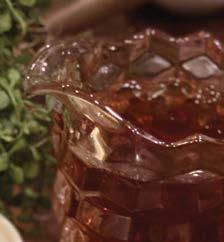

INGREDIENTS
1 teaspoon melted butter
1 to 2 thin slices deli ham
2 eggs
½ tablespoon whipped cream cheese (or 2 tablespoons of heavy cream)
1 tablespoon melty cheese, your choice (string, mozzarella, cheddar)
Makes 1 serving
Brush a shallow ramekin (6-ounce small ovenproof bowl will work) with melted butter. Line the dish with the ham. Crack the eggs carefully over ham, and sprinkle with salt and pepper. Bake at 325 degrees for about 20 minutes until the egg starts to set. Remove from oven and top with cheese and the cream cheese/heavy cream. Return to oven until eggs set (don’t overcook) and cheese melts. Serve immediately from the ramekin or lift out onto a plate.




Makes a ½ gallon
4 single serving black tea bags (use 2 family size if you like)
2 quarts water
1 cup sugar
Bring 1 quart of water to a rolling boil. Turn off the heat and drop in 4 single cup size black tea bags and soak in water for 5 minutes. Pour hot tea over 1 cup of sugar in a heat-proof pitcher. Add 1 quart of cold water and stir. Cool down completely, then chill in fridge before serving over ice.

I learned to make sweet tea in high school home economics class. I didn’t cook much in those days, but the chore of making tea and coffee for supper fell on me. I was thankful to Ms. Hudson in those days for being very specific about how to make it “properly.”

by Vicki Leach

Vicki Leach is a full-time chef/culinary instructor at Mississippi State University in the Department of Food Science, Nutrition, and Health Promotion. She teaches Science of Food Preparation, Foodservice Organization, and Quantity Food Production. She lives in a 130-year-old farmhouse that speaks to her old soul.



















Download a free, interactive legislative app for Mississippi
Look for “ECM Legislative Roster” in the Apple App Store. An Android version is also available through the Google Play Store.





The Electric Cooperatives of Mississippi o ers an easy-to-use mobile app, which provides information on Mississippi’s state and federal elected o cials.







